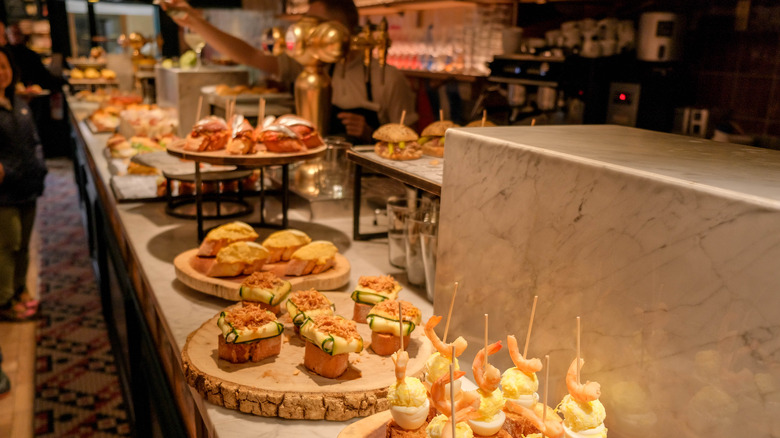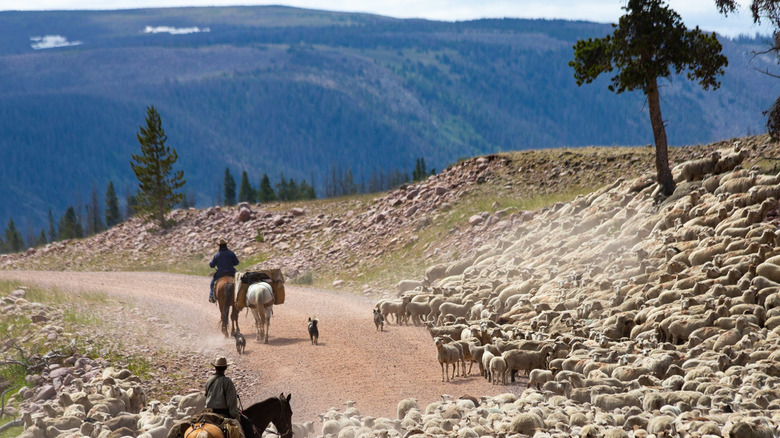Why There Are So Many Basque Restaurants In The American West
Home to the largest Basque population (more than 16,000 per Boise Dev) aside from their native European homeland — Boise, Idaho's Basque Block serves as a mecca for the culinary culture about which many Americans may know little. Here you can sip on Picon Punch — a mixture of amaro liqueur, soda water, grenadine, a splash of lemon, and a bit of brandy floating on top – which has become a cocktail recipe staple in the world of mixology, per Smithsonian Magazine. And, savor Basque pintxos, similar to Spanish tapas, but smaller bites served atop pieces of bread pierced by a toothpick at The Basque Market. Moreover, it's where Jaildi, one of the world's largest Basque festivals, is celebrated on the block's streets with meat-heavy cuisine paired with sparkling wine, ciders, and Basque cheesecake front and center.
But Boise isn't the only place Basque culinary culture thrives. From the Star Hotel in Elko, Nevada, to the Noriega Hotel in Bakersfield, California, this culinary tradition continues to flourish throughout the American West. And, at its core of existence are historical Basque boarding houses, according to Smithsonian Magazine.
Basque-American food isn't what you'd necessarily consider light fare. Mainly served family style, Eccentric Culinary lists the traditional set up of soup, salad, beans, and the like accompanied by mains such as pork, lamb, and beef steak, primarily grilled or stewed. It's filling by design and for good reason.
How Basque cuisine came to America
Euskal Herria — what natives of the Basque region call the "land of the Basque speakers" is located off the northern borders of Spain and France, low in the Pyrenees mountains peaking at a mere 6,000 feet (via the Eusko Guide). The Basque people's history primarily includes sheepherders throughout the ages — not to be confused with shepherds who tend small flocks (per Eccentric Culinary). Sheepherders lived on meager means herding large flocks upon the open mountain ranges. It was a complex, lonesome existence; the families wanted more for their children.
Young Basque sheepherders traversed the rugged 19th-century American West to earn better wages, per Eccentric Culinary — with one major caveat. The conditions were brutal and lonesome. "The hardest part? It wasn't the work. The work is easy work. I mean, it's no work. It's the loneliness. You're by yourself over there," sheepherder Tony Rodriguez says in Alone on the Range: Basques in Wyoming.
Come winter, and they retreated from the mountains where boarding houses tended to them — from banking to employment, the boarding housekeepers would help the loyal, hardworking men, notes Eccentric Culinary. The outlet adds that they were fed hearty meals at their temporary homes in town. Today, the most sustaining service once considered a luxury by the trusted Basque immigrants remains a traditional American-Western cuisine.
The Michelin-starred Basque Country in Spain can wait. With such vast Basque-American culinary offerings, taste for yourself why so many flock to them.

